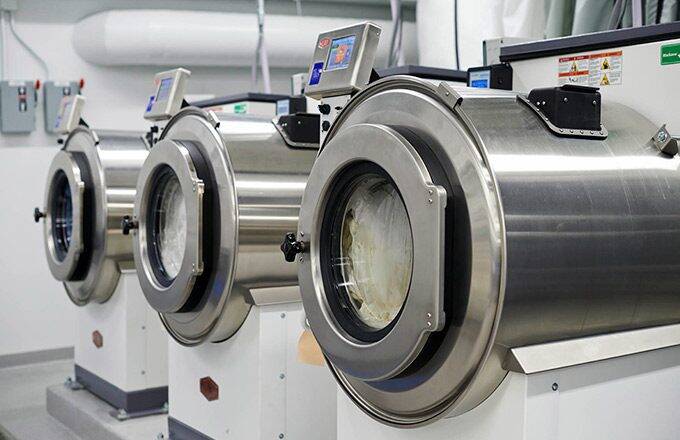February 13, 2024
How to Prevent Overdrying Your Linens

Laundering hospitality linen is a complex process that requires careful attention to detail. One of the most overlooked steps is the drying cycle. While it may seem as easy as pressing a button, the process is not nearly that simple.
Is it Possible to Overdry Sheets and Towels?
Absolutely. In fact, it is one of the most common laundry mistakes we encounter. Most people believe a sheet or towel isn’t dry until all dampness is completely removed. In reality, doing this is actually severely overdrying your linens. This can lead to major issues with the quality and lifespan of these products.
Why is Overdrying Linen a Problem?
Cotton in its optimal “dry” state holds about 7-8% of its weight in water. When cotton products are overdried, the product can feel rough and scratchy due to the loss of this moisture. Overdrying causes the cotton fibers to become brittle and more prone to damage. It also leads to higher shrinkage rates on the finished products.
How to Prevent Overdrying
Following are some recommendations that can help to prevent overdrying:
- Do Not Overload Equipment – Don’t overload the dryer as good tumbling and airflow is needed to dry products evenly. A packed dryer can result in products on the outer edge becoming too dry while the products in the middle are still wet. It has been our experience that loading equipment to 70 – 80% of rated capacity works well.
- Do Not Mix Products – Products should be separated and laundered based on their fabric content. Polyester-rich products will dry faster than cotton-rich products.
- Dry Temperature – Do not exceed 160°F when tumble drying sheets and towels.
- Use a Dryer Cool Down Cycle – The dry cycle should have a gradual cool down step to slowly reduce the dry temperature at the end of the cycle. The linen should feel slightly warm and the hems should feel slightly damp at the end of the drying process. A good dryer cool down cycle (i.e. five minutes with reduced heat) will help the fibers relax and maintain softness.
- Ensure Equipment is Operating Correctly – Correctly burning dryers should produce a solid blue flame with a slight orange tip. Erratic, orange flames can scorch the linen and are a key sign of restricted airflow. This can also produce soot that will discolor and gray your linen.
- Par Levels and Resting Time – Maintaining good par levels is suggested to ensure products are not immediately taken from the dryer to be put in use. Cotton fibers need time to reabsorb moisture and rest. Best practice is to maintain a 3-par level (one set in use, one set in the wash process, and one set “resting”). This will provide the longest lifespan for the goods.
Considerations for Ironing
If products are to be ironed, make certain they are properly conditioned to prevent overdrying. It’s recommended that items contain 30%-40% moisture content before ironing. Adhering to this guideline will help ensure a quality ironed finish, while minimizing linen damage. Moisture content can be managed by the extraction process at the end of the wash process, conditioning time in the dryers, and the time a product is allowed to rest before it is ironed. Flatwork ironer speeds should be adjusted accordingly with a temperature in the range of 300°F to 350°F.
Items exiting the ironer should maintain 2-3% moisture content, as this will allow smooth folds and preserve the life of the fibers, while reducing the creation of lint and static electricity. Items ironed fully dry are prone to fiber damage, excessive accumulation of lint and the creation of high levels of static electricity.
Ready to Learn More?
Visit our blog to read more laundry tips and learn more about par levels. You can also contact us to discuss your specific needs with our laundry experts.
Related Content

Hotel Laundry 101: How to Keep your Laundry Running Smoothly
Our top tips to keep your hotel laundry running smoothly despite labor shortages and inexperienced staff.

6 Tips to Get the Most Out of Your Hospitality Linen
With proper care and attention, you can make your linens last longer and save on replacement costs. Learn our top tips to get the most out of your hospitality linen.

Common Laundry Mistakes that Can Ruin Hotel Linens
Let’s explore important laundry DON’Ts from our laundry experts that will keep your linens in tip top shape.